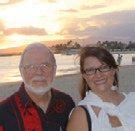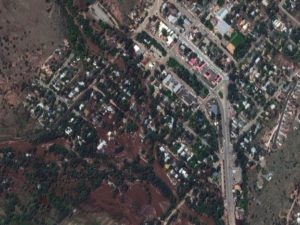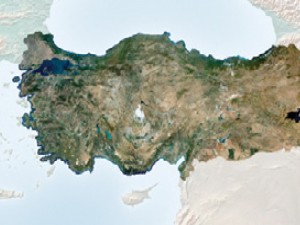Letter from the Publisher

Myrna James Yoo
Publisher and
Managing Editor
Apogeo Spatial
and LBx Journal
Owner
Blueline Publishing LLC
DEAR COLLEAGUES,
Dr. Ray Williamson has served as Editor of Apogeo Spatial since my company, Blueline Publishing LLC, acquired it in 2005 (then called Imaging Notes from then Space Imaging). He has recently retired from Secure World Foundation, where he was Executive Director, and most recently a Senior Advisor. I am thrilled to say that Ray has agreed to stay on as Editor, to be with us as we celebrate our 30th Anniversary in 2015!
In this issue, we focus on the newest commercial satellite launch from DigitalGlobe, WorldView-3, which for the first time will provide views into water, through smoke, and even into the Earth to determine moisture and mineral content of the soil. See here for images showing fire through the smoke, taken just 15 days after the launch in August 2014. The super-spectral capabilities are being proven already.
Esri’s ArcGIS Marketplace, launched in September 2013, provides their customers with easy access to a huge amount of content, from many companies. We provide a look at the imagery that is available there from BlackBridge’s RapidEye, and the satellites of DigitalGlobe and Airbus Defence and Space. The news in July 2014 is that Airbus DS is allowing users to directly task their satellites, which is unprecedented, and quite exciting. Pricing starts at $1620. Read about it here.
On the policy side, we hear from the Director of the UN Office for Outer Space Affairs (UNOOSA), Simonetta Di Pippo, about their commitment to capacity building in space technologies and to disaster response here.
Our regular column, On the Edge, discusses a new book, The Collapse of Western Civilization – A View from the Future, by the esteemed authors of Merchants of Doubt, Naomi Oreskes and Erik M. Conway. It looks at, from the future, why our civilization collapses when we have the most advanced human intelligence and technologies in history. But author Hans-Peter Plag is optimistic that this will not happen. The story here.
Of course, the issues of disasters and sustainability do not stop at our borders. The natural ecosystem is interconnected; rivers run through political boundaries. As we know, we cannot see national borders from space. One thing that we can see from space is the entire planet, all at once, from a new perspective—one that fundamentally changes our view of the world.
This change in perception has been called “The Overview Effect.” Frank White in his book of the same name notes, “Nearly all astronauts report a lasting ‘globalization’ of awareness concerning environmental, political, and social issues.” Astronaut Mark Garneau is quoted as saying, “You become more of a global citizen.” And Edgar Mitchell, Apollo 14 astronaut who walked on the moon in 1971 sums it up, “We went to the moon as technicians. We returned as humanitarians.”
I experienced something like this change in perspective, and perception years ago from traveling around the world solo for over a year. The world became a very small place, and I saw how everything is interconnected. The beauty is overwhelming, and there is a sense of unity. Of course, it was not the same as seeing the Earth from space, but the way that it changed my perceptions about our fragile planet, and that we are all on it together, was very similar.
I believe if more people could experience this Overview Effect, whether by seeing the Earth from space, or studying the cosmos, or traveling the world, that conflict would decrease and more people would be aware of how we need to work together to take care of our planet and scarce resources. Perhaps space tourism will help!
As Hans-Peter Plag points out regularly in his column in this magazine, the science is clear that we must make changes for humanity to survive, as storms get worse and coastlines and entire islands disappear…
Share your own Overview Effect with us on social media.





